Discover fascinating facts about the history, people and places of the Swedish capital city, Stockholm.
As the cultural, political, media and economic heart of our neighbours in Sweden, Stockholm is a natural choice for a weekend break from Norway.
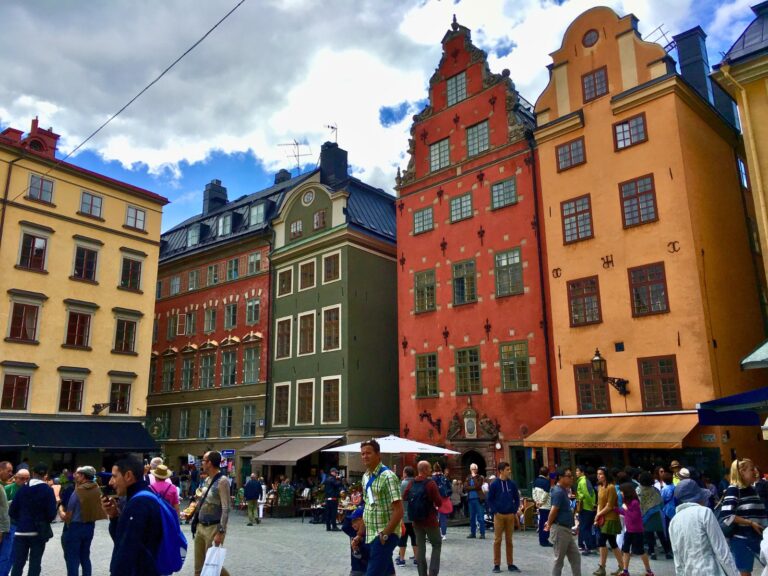
The city has a familiar Nordic feel, yet its atmosphere, architecture and rhythms are distinctly Swedish. Spread across a maze of islands linked by bridges and ferries, it’s a capital where history and modern life meet at every turn.
But how much do you really know about Stockholm? Beneath its picture-perfect waterfront lies a story of Viking trade routes, royal intrigue, groundbreaking design, and a deep love of nature that continues to shape the city today.
In this article, we explore fascinating facts about the history, people and places that make Stockholm such an intriguing destination. Whether you’re planning a trip to Sweden or you’re simply curious about life on the other side of the border, you’ll find plenty to discover here.
If you are planning a visit, don’t miss our separate guide to the best things to do in Stockholm. But for now, let’s dive into some fun facts about this remarkable Scandinavian capital.
History of Stockholm
From its humble beginnings as a fortified trading post to its rise as one of Europe’s most forward-looking capitals, Stockholm’s story is full of dramatic moments and defining change.
1. The city was founded in the 13th century
Stockholm’s official founding dates to around 1252, when Birger Jarl ordered the construction of a fortress on Stadsholmen, the island now known as Gamla Stan (the Old Town).
The location was strategic, guarding the entrance from Lake Mälaren to the Baltic Sea and controlling trade between the interior of Sweden and the coast. Behind its early brick and stone walls, narrow streets filled with wooden houses and merchants’ workshops soon formed the beginnings of a bustling medieval town.
The defensive structure and prime location helped Stockholm grow rapidly into an important hub for trade, politics and royal power.
2. People have lived here since the Stone Age
Long before Birger Jarl chose the spot for his fortress, people had already been living and hunting in the area for thousands of years.
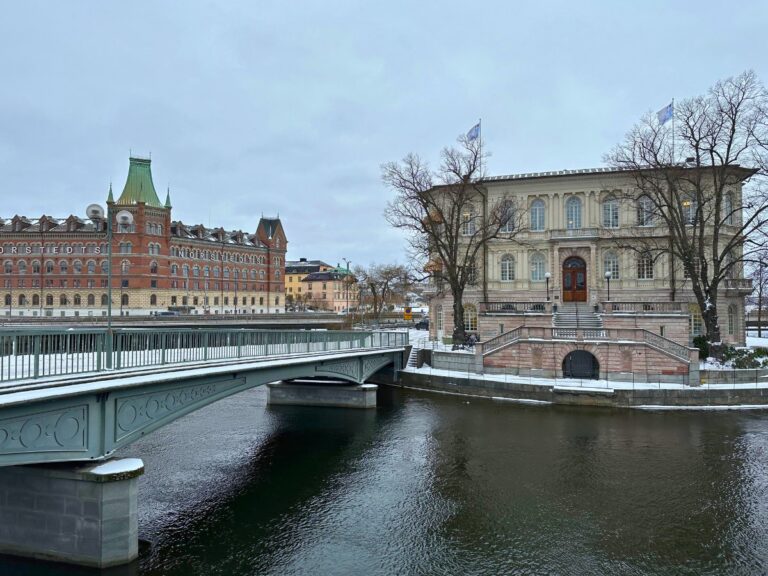
Archaeologists have uncovered Stone Age tools, pottery and hearths on the islands and surrounding mainland, evidence of settlements dating back roughly 8,000 years.
The landscape then looked very different: the sea level was higher, and the islands were part of a rugged coastal archipelago perfect for fishing and seal hunting. Over centuries, small farming communities emerged, laying the groundwork for the region’s later prosperity.
3. Stockholm changed forever during the 16th Century
The 1500s were a turbulent and transformative era for Stockholm. Sweden’s break with the Catholic Church brought the rise of Protestant Lutheranism and a wave of political and social change.
New stone and brick buildings replaced many of the city’s wooden homes, giving Stockholm a sturdier, more urban appearance. Trade flourished under royal oversight, but new taxes and frequent wars placed heavy demands on ordinary citizens.
Despite unrest, the city’s population grew as people flocked to find work in the shipyards, markets and expanding administrative offices of the Swedish crown.
4. The Stockholm Bloodbath
One of the darkest chapters in Stockholm’s history unfolded in November 1520, when Danish King Christian II staged what he claimed would be a peaceful coronation celebration.
Instead, he ordered the execution of nearly 100 Swedish nobles, clergy and citizens, accusing them of heresy and treason. The massacre horrified the country and united Swedes against Danish rule.
Within just a few years, Christian was overthrown, the Kalmar Union that had linked the Scandinavian kingdoms was dissolved, and Gustav Vasa rose to power as Sweden’s first truly independent monarch. The event remains a defining symbol of Sweden’s fight for sovereignty.
5. The Vasa warship is famous for its failure
Few historical disasters have turned into such a beloved national treasure. The mighty Vasa warship, built to showcase Sweden’s naval dominance, set sail in 1628, and sank less than a kilometre from the dock.
Top-heavy with cannons and lavish carvings, the ship capsized in the harbour before it even reached open sea. Miraculously, the cold, brackish waters of Stockholm preserved the wreck. When it was salvaged in 1961, it emerged almost fully intact, complete with thousands of artefacts.
Today, the Vasa Museum is one of Stockholm’s most visited attractions, offering an extraordinary glimpse into 17th-century craftsmanship and royal ambition.
6. Stockholm hosted the Olympics
In 1912, Stockholm proudly hosted the Fifth Modern Olympic Games, a landmark event that showcased Sweden to the world. More than 2,400 athletes from 28 nations competed in events that included now-forgotten disciplines like tug-of-war and long-distance swimming in open water.
The games were notable for their organisation and innovation: electronic timing was used for the first time, and Japan became the first Asian nation to participate.
Many of the venues, such as the Stockholm Olympic Stadium, are still in use today for concerts and athletics, a lasting reminder of the city’s sporting heritage.
People of Stockholm
Modern Stockholm is a cosmopolitan city where history, innovation and global influences blend seamlessly.
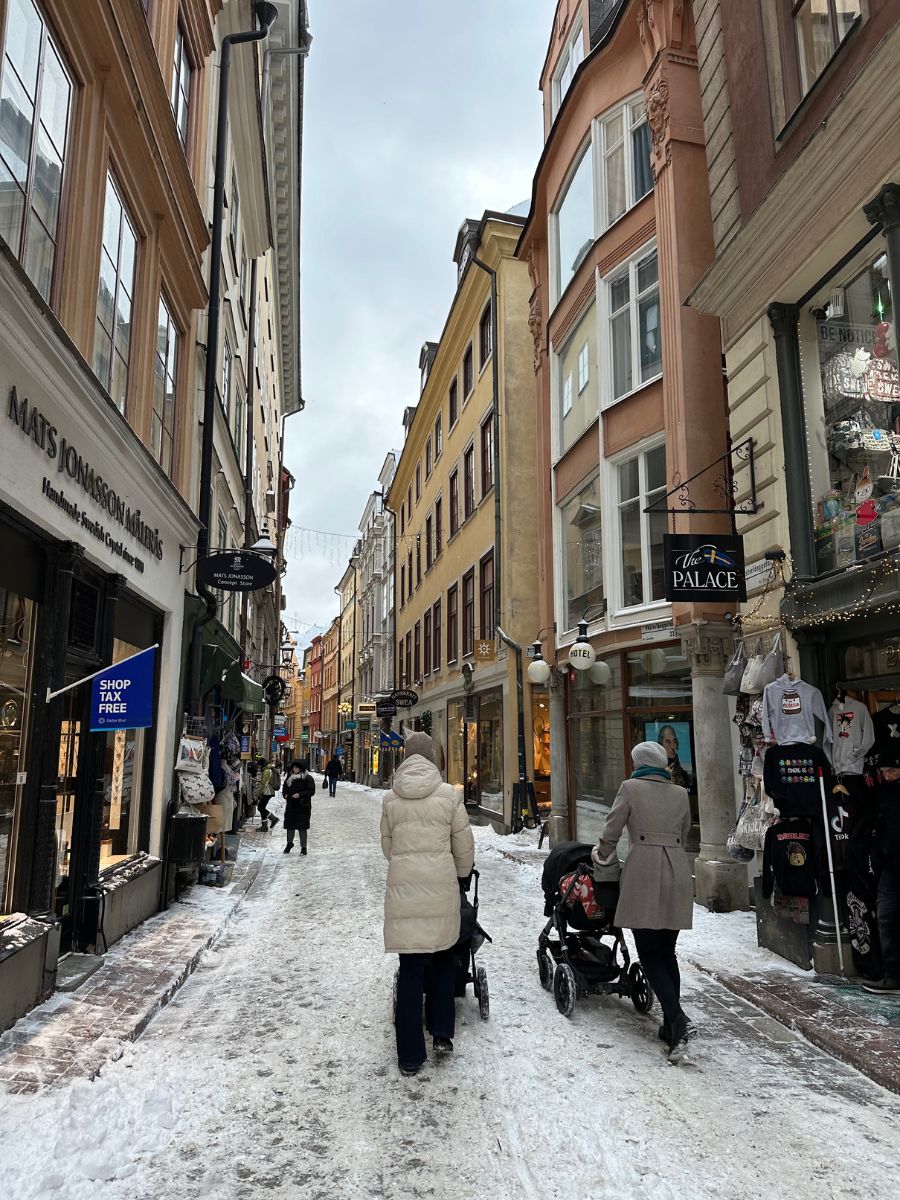
Its people are proud of their Swedish heritage yet outward-looking, helping to make the capital one of the most dynamic urban centres in the Nordic region.
7. Stockholm is the biggest Nordic city
Stockholm comfortably holds the title of the largest city in the Nordic countries. Within the city limits, almost one million people call it home, while the wider metropolitan region, known as Stockholm County, counts more than 2.4 million residents.
The city’s steady growth has been fuelled by migration from across Sweden and beyond, as well as a thriving economy built on technology, finance, and creative industries.
Despite its size, Stockholm retains a surprisingly compact feel. Many of its neighbourhoods, from the royal quarters of Östermalm to the bohemian corners of Södermalm, are within walking distance or a short metro rid
8. One-third of Stockholm residents are immigrants
Few European capitals are as diverse as Stockholm. Around one in three residents is of foreign background, meaning they were either born abroad or have two foreign-born parents.
This mix of cultures has helped to shape everything from the city’s restaurant scene and languages heard on the streets to its entrepreneurial spirit.
9. There are more than 16,000 Iraqis living in Stockholm
Among Stockholm’s many immigrant communities, Iraqis form the largest single foreign-born group, numbering more than 16,000 people. Many arrived during and after periods of conflict in the Middle East, seeking safety and stability.
They are followed closely by residents from Finland, reflecting the deep historical ties between the two neighbouring nations. Other sizeable groups come from Iran, Poland, Somalia, India, Syria, and Turkey, giving Stockholm a distinctly global flavour.
10. A former prime minister was shot dead on the city streets
One of Stockholm’s most shocking moments came on 28 February 1986, when Swedish Prime Minister Olof Palme was assassinated on Sveavägen, one of the city’s main streets, after a visit to the cinema with his wife.
Palme was known for his outspoken left-wing politics and international activism, and his death sent shockwaves through Sweden and beyond. The case baffled investigators for decades, with thousands of leads but no convictions.
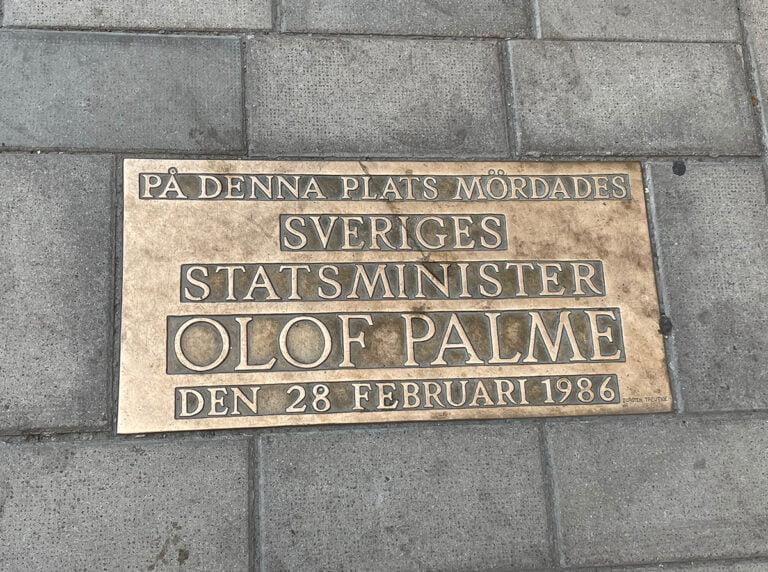
In 2020, prosecutors finally named their likely suspect, a man who had died by suicide many years earlier, and closed the case. The murder remains one of Europe’s great political mysteries, and the site where Palme fell is now marked with a modest memorial.
11. Martin Beck is the city's most famous police detective
Stockholm has produced many famous figures, but one of its best-known detectives exists only on paper. Martin Beck, the creation of writers Maj Sjöwall and Per Wahlöö, is the star of ten novels that helped establish the Nordic noir genre of crime fiction.
Written between the 1960s and 1970s, the series portrays Beck as a thoughtful, weary investigator navigating not just crime but also the social and political realities of Swedish life.
The books inspired films, television adaptations, and a whole generation of Scandinavian crime writers, from Henning Mankell to Jo Nesbø.
Places of Stockholm
Stockholm’s geography is inseparable from its identity. A city shaped by water and light, it’s both an urban capital and a place deeply tied to nature. From grand palaces to island retreats, the city’s landscapes tell the story of Sweden’s past and present.
12. Stockholm is built on islands
Few capitals in the world can match Stockholm’s unique geography. The city spreads gracefully across fourteen islands where Lake Mälaren meets the Baltic Sea, a setting that gives it both beauty and character.
Bridges, ferries and walkways connect the islands, turning a simple commute into a scenic journey. Each island has its own identity: Gamla Stan with its medieval lanes and royal palaces, Djurgården filled with museums and green spaces, and Södermalm, once working class and now a creative hub.
13. The Stockholm archipelago is huge
Beyond the city centre lies one of Europe’s most extraordinary natural landscapes: the Stockholm archipelago. Stretching far into the Baltic, it consists of around 24,000 islands, islets and skerries, some no larger than a boulder, others home to forests, villages and summer cottages.
In summer, city residents escape to these islands to swim, sail and unwind at small seaside cafés. Regular ferries and excursion boats make it easy to explore, with routes departing from Strömkajen and Slussen to destinations like Vaxholm, Sandhamn and Grinda.
14. Stockholm County has three UNESCO World Heritage sites
Stockholm’s cultural and historical importance is recognised by UNESCO, which lists three sites within the county. The most famous is Drottningholm Palace, the private residence of the Swedish royal family, surrounded by manicured gardens and a remarkable 18th-century theatre still in use today.
The Viking Age trading sites of Birka and Hovgården tell the story of early Scandinavian commerce and culture, standing as rare archaeological windows into the Viking world.
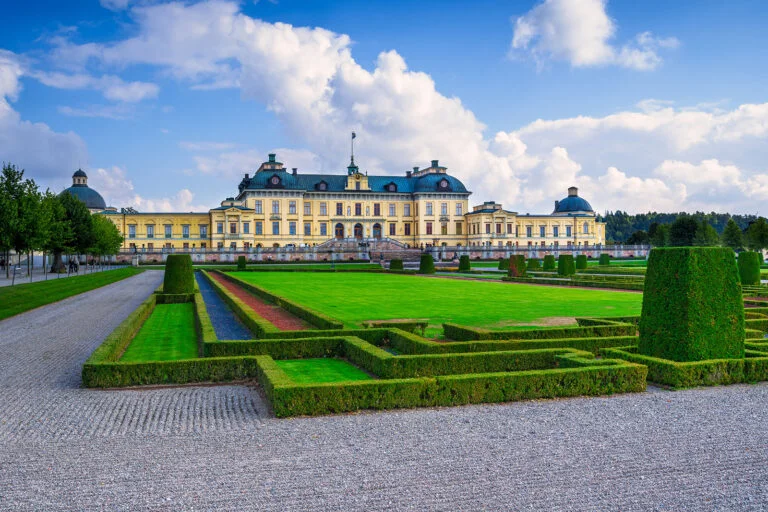
Finally, Skogskyrkogården, or the Woodland Cemetery, is a masterpiece of landscape architecture. It's a tranquil blend of nature, spirituality and modern design created in the early 20th century.
15. Stockholm metro is well known for its art
Riding the Stockholm metro (Tunnelbana) is as much a cultural experience as a practical one. Often described as “the world’s longest art gallery”, the network’s 100-plus stations are adorned with mosaics, sculptures, murals and installations by more than 150 Swedish artists.
Each stop has its own personality: T-Centralen greets travellers with soft blue vines painted on rough stone walls, while Solna Centrum glows with an otherworldly red cavern ceiling. The idea was born in the 1950s, when city planners decided public art should be part of everyday life.
16. Södermalm is home to the Stieg Larsson's ‘Millennium' series
The southern island of Södermalm has gone from working-class neighbourhood to one of Stockholm’s trendiest districts, and fans of Scandinavian crime fiction know it well. It’s here that journalist and author Stieg Larsson set much of his Millennium series, including The Girl with the Dragon Tattoo.
The books and films capture Södermalm’s gritty charm, from narrow backstreets to modern cafés overlooking the water. Today, walking tours guide fans past key locations such as Mikael Blomkvist’s fictional apartment and the offices of Millennium magazine.
Beyond the literary fame, Södermalm remains one of Stockholm’s most creative areas, full of vintage shops, art galleries and small restaurants that give the island its unmistakable energy.
Other facts about Stockholm
Beyond its islands and architecture, Stockholm stands out for its cultural achievements, climate surprises and forward-thinking approach to urban life.
17. Nobel Prizes are awarded in Stockholm
Every December, the world’s eyes turn to Stockholm for the Nobel Prize ceremonies, celebrating achievements in physics, chemistry, medicine, literature and economics.
Laureates receive their medals and diplomas in the elegant Stockholm Concert Hall, followed by a lavish banquet at Stockholm City Hall attended by the Swedish royal family.
The only exception is the Nobel Peace Prize, which is awarded across the border in Oslo.
18. It's not as cold as you think
For a northern capital, Stockholm enjoys a surprisingly mild climate. Winters are chilly but not extreme, with average daily temperatures dipping below zero only in January and February. Snowfall is common between December and March, transforming the city into a postcard scene of frozen waterways and twinkling lights.
Summers, on the other hand, are pleasantly warm and filled with daylight that lingers well into the evening. That's perfect for visiting outdoor cafés and taking late-night walks by the water.
19. Stockholm has three top flight football clubs
Football in Stockholm is as much about passion as performance. The city boasts three major clubs (AIK, Djurgården, and Hammarby) all competing in Allsvenskan, Sweden’s top division.
Derbies between them, especially AIK versus Djurgården, are among the fiercest rivalries in the Nordic region, drawing huge crowds and vibrant displays of colour and song.
20. Stockholm has the biggest stadium in Scandinavia
The Friends Arena, located in Solna just north of central Stockholm, is the largest stadium in Scandinavia. It can seat around 50,000 spectators for football and up to 65,000 for concerts, hosting events from Sweden’s national team matches to international superstars like Beyoncé and Bruce Springsteen.
21. Stockholm was Europe's first “green capital”
In 2010, Stockholm became the first city ever named European Green Capital by the European Commission. The award recognised decades of work to improve air and water quality, promote public transport, and expand green spaces.
Even today, more than 40% of the city area consists of parks and waterways, and nearly all residents live within easy reach of nature.

